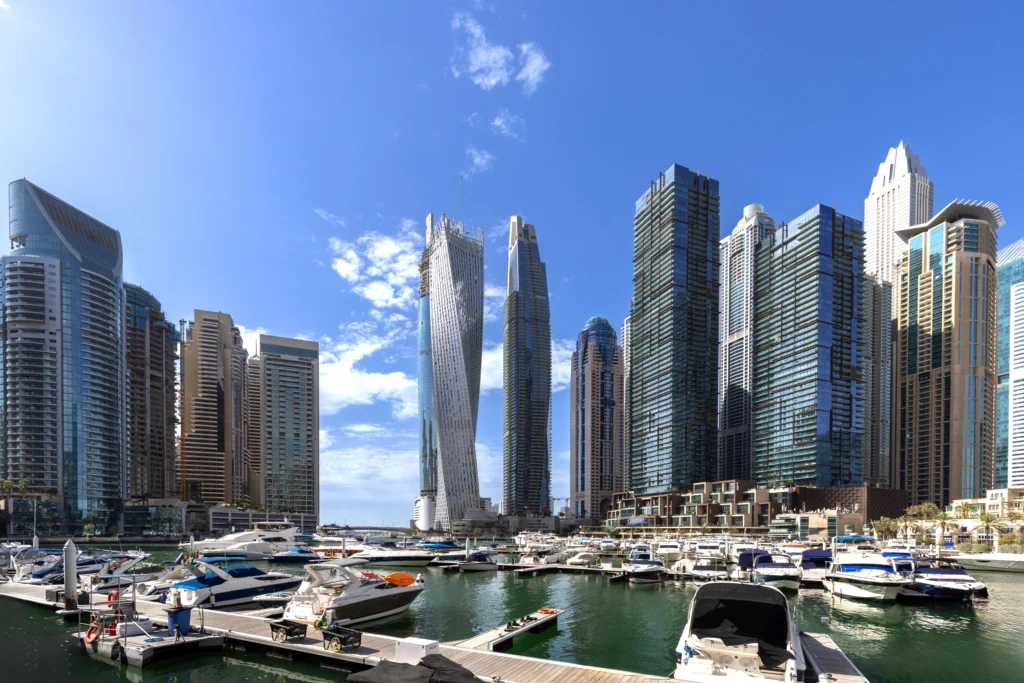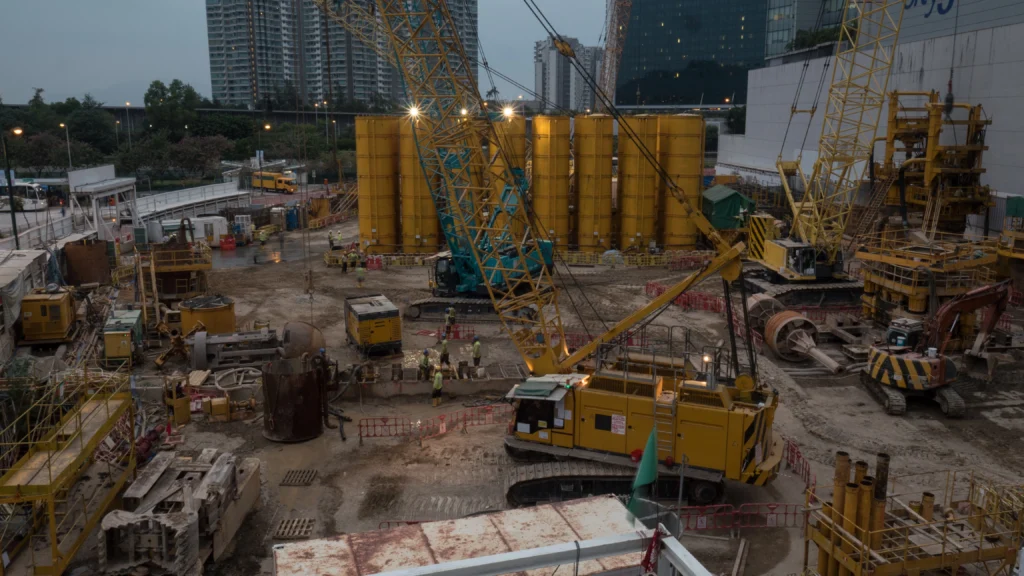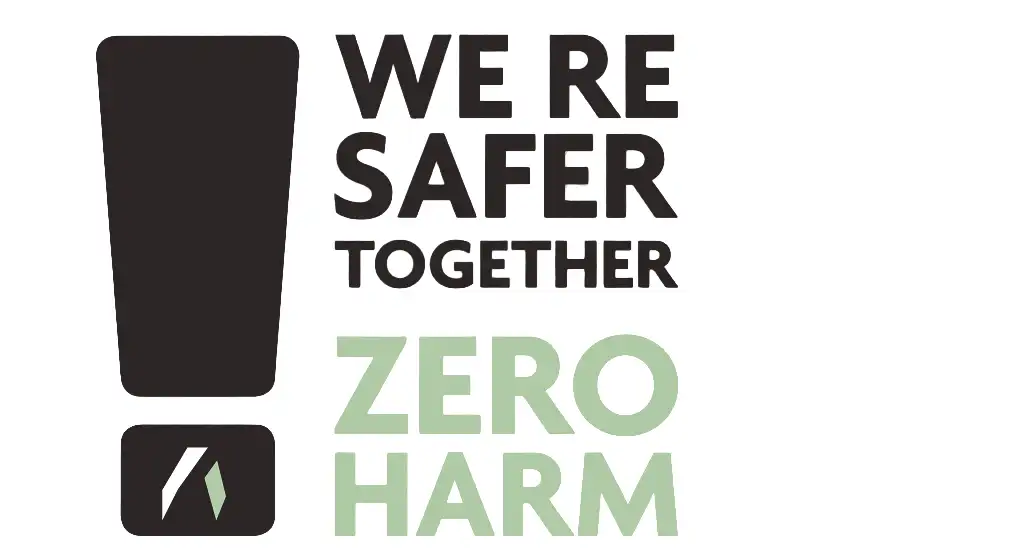Dubai Skyscraper Logistics: The 7 Monumental Steps from Sand to Superstructure

The Ultimate Challenge: Logistics of Building a Dubai Skyscraper
Dubai’s skyline is a modern marvel, a forest of glass and steel that seems to defy gravity itself. But behind every record-breaking tower lies a hidden story—one not of bricks and mortar, but of mind-bending logistics.
Building a skyscraper anywhere is complex. But the logistics of construction in Dubai present a unique set of challenges, from the desert climate to the sheer scale of the projects. It’s a carefully choreographed ballet of manpower, materials, and machinery that operates 24/7.
How do thousands of tons of concrete reach the 100th floor? How do thousands of workers coordinate in a space smaller than a city block? This journey from a simple patch of sand to a cloud-piercing superstructure follows seven monumental steps.
Step 1: The Invisible Foundation (Geotechnical & Site Logistics)
Long before the first crane appears, the most critical work happens beneath the ground. A team of geotechnical engineers conducts extensive soil testing to understand the unique composition of Dubai’s sand and weak rock. This is the foundation of all Dubai skyscraper logistics.
The logistical challenge here is immense. It involves mobilizing heavy-duty drilling rigs, managing the removal of thousands of cubic meters of earth, and coordinating the precise delivery of high-strength concrete for hundreds of deep friction piles. This foundational phase sets the stage for everything to come.
Step 2: The Vertical Factory (Material & Supply Chain)

A skyscraper is essentially a factory that builds itself upwards. The primary logistical challenge is vertical transport. Every single item—from steel beams to window panes to electrical wiring—must be moved from the ground to the active construction floor.
This requires a sophisticated supply chain. Materials are often delivered to off-site staging areas, broken down into manageable loads, and then transported to the congested construction site on a strict “just-in-time” schedule to avoid creating bottlenecks. For more on this, you can read about our approach to project management.
Step 3: The Concrete Labyrinth (Pumping & Curing)
Concrete is the lifeblood of a skyscraper. In Dubai’s climate, the logistics of pouring it are a race against time. The concrete mix must be carefully engineered to withstand the heat and prevent it from setting too quickly during its journey.
Massive pumps, some of the most powerful in the world, are required to push the liquid concrete hundreds of meters into the sky. This process requires immense pressure and perfectly coordinated timing. The mix is often cooled with ice before pumping and poured at night when temperatures are lower.
Step 4: The Climbing Cranes (Machinery & Manpower)
The iconic tower cranes that dot the Dubai skyline are logistical marvels in their own right. These cranes essentially build the skyscraper, lifting everything from steel to other pieces of equipment.
But how does the crane get taller as the building grows? Through a process called “climbing” or “jumping.” The crane builds a few floors above itself and then uses powerful hydraulic jacks to lift its own base up to the newly completed section. This process is one of the most dangerous and logistically complex parts of the entire build.
Step 5: The Glass Skin (Facade Installation)
Once the core structure is up, the building needs its skin. Installing thousands of high-performance glass panels on a supertall building is a monumental task.
Each panel is lifted by a dedicated crane or hoist and meticulously guided into place by a specialized crew working from the inside and outside of the building. The logistics involve ensuring that the thousands of unique panels are delivered in the correct sequence and installed with millimeter precision to ensure a perfect seal against Dubai’s wind and heat.
Step 6: The Internal City (MEP & Interior Fit-Out)
With the structure and facade complete, the focus moves inside. This phase involves installing the building’s vital organs: the Mechanical, Electrical, and Plumbing (MEP) systems. This is like building a small city’s worth of infrastructure vertically.
Thousands of kilometers of pipes, ducts, and wires must be installed, connecting every floor. The logistics require incredible coordination between hundreds of specialized workers—plumbers, electricians, and HVAC technicians—all working in confined spaces. This is a critical step in our portfolio of completed projects.
Step 7: The Final Descent (Dismantling & Demobilization)
One of the final and most challenging logistical puzzles is getting everything back down. How do you remove the giant tower crane that built the very top of the skyscraper?
The large crane is used to assemble a smaller crane on the roof. The large crane is then dismantled piece by piece and lowered to the ground by the smaller crane. This process is repeated with an even smaller crane until the last piece can be taken down in a service elevator. It’s a meticulous and symbolic end to the construction process.
Conclusion: The Art of the Possible
The logistics of building a Dubai skyscraper are a powerful testament to human ingenuity and planning. Each tower on the skyline represents millions of hours of coordinated effort, a seamless flow of materials from around the globe, and a relentless push against the boundaries of what is possible. It’s an art form where the canvas is the sky, and the tools are data, machinery, and a shared, ambitious vision.

